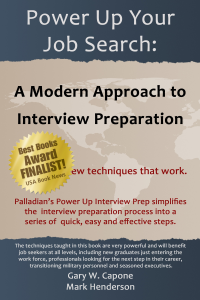The first thing a hiring manager will see when you send an email is your name. Few people think about how they are marketing themselves with their name, but there are pitfalls to avoid.
I’m not suggesting you change your identification to something other than your name. On the contrary, job seekers should identify themselves by name. Surprisingly, a number don’t. Typically, this is a result of using a family member’s email address. The other person’s email has their name in the address, and it identifies them at the top of the email. Sending an email with someone else’s email can be confusing for a hiring manager.
Many hiring managers receive dozens or hundreds of emails each day. You can’t expect a hiring manager to remember that emails from “Jane Doe” and the address janedoe @ gmail . com, are really messages from “John Doe.” Even worse, if you use an email without full names, remembering and identifying who you are can prove difficult.
For example, I received a resume of a job seeker recently who used a family email address. The email name was something like “John and Jane,” and the email address was johnandjane @ gmail . com. The job seeker had sent his resume a week or two ago, and sent me a follow up email. The follow up email was signed “John.”
Nowhere in the email was the candidate’s last name. The only way I could find the candidate in my database was to search on the email address field. This isn’t impossible, and it really isn’t all that difficult. It is more time consuming than looking up the candidate by last name. Most databases are set up to make looking up a name fast. There are so many fields to search on in a job seeker's record, looking up candidates on other criteria is slower. So, the candidate’s email ended up focusing my attention entirely on the fact that he doesn’t have his own email.
How to Change Your Email and Email Name
For your job search, you should have a personal email address with your name. This should have your last name and either your first name or first initial. It is easy to get a free email account. Just go to Google and sign up for gmail.
Once your email is set up, select the email name that is associated with the account. In gmail, you can go to Settings and then to Send Mail As and change the name displayed with your email address.
If you use Outlook, you can make this change in Outlook. Microsoft provides instructions at: http://office.microsoft.com/en-us/outlook/HA011507601033.aspx.
Finally, you should also set up a standard signature for your email. A signature is a block of text that is automatically placed at the bottom of each email you send. It should contain your full name and contact information – although just a phone number is usually sufficient. You want to make it easy for a hiring manager to pick up the phone.
Will This Really Help My Search?
Setting your email name, email address and creating a signature for your emails are minor details. They will not get you hired if you aren’t qualified. They also won’t cause you to be rejected by themselves. If you’re a superstar and clearly the best person for the job, you can make a lot of mistakes in your job search, and they won’t hurt. Most people are not clearly better than their competition. If this is your situation, you want to make the best impression you can every step of the way. Details like your email are easy to change. It only takes a minute or two, and then you’re good to go for the remainder of your job search.
The one way your email might have a large impact on your search is if you have something controversial as an email name. There are email addresses that are really hurting the job seekers. I’ve received emails that include made up boastful titles, such as xtreme, big and king. Others call into question whether the job seeker has a propensity for violence (just a hint here, but “gangsta,” “gunman” and “sniper” aren’t good to have in your email address). For other words (such as menace, freedom, hotrod and spartan), it’s more difficult to know how different people will interpret them. All of these words appeared actual email address of job seekers sending me a resume. The email addresses are eye catching and memorable, but they did not help the job seeker, and in a few cases, hurt their chances significantly.



